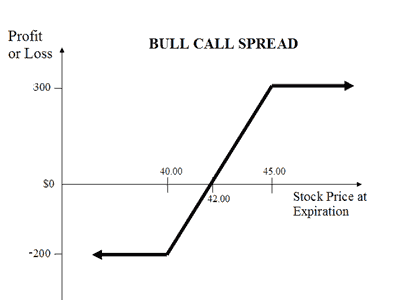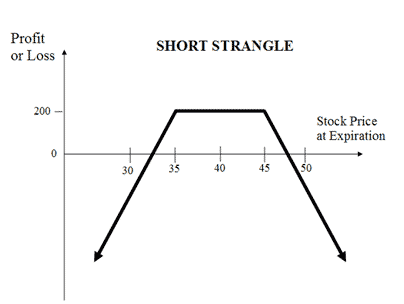 Zerodha (Trading Account)
Zerodha (Trading Account)
FREE Equity Delivery and MF
Flat ₹20/trade Intra-day/F&O
 Zerodha (Trading Account)
Zerodha (Trading Account)
FREE Equity Delivery and MF
Flat ₹20/trade Intra-day/F&O

|
|
Compare Bull Call Spread and Short Strangle (Sell Strangle) options trading strategies. Find similarities and differences between Bull Call Spread and Short Strangle (Sell Strangle) strategies. Find the best options trading strategy for your trading needs.
| Bull Call Spread | Short Strangle (Sell Strangle) | |
|---|---|---|
 |
 |
|
| About Strategy | A Bull Call Spread (or Bull Call Debit Spread) strategy is meant for investors who are moderately bullish of the market and are expecting mild rise in the price of underlying. The strategy involves taking two positions of buying a Call Option and selling of a Call Option. The risk and reward in this strategy is limited. A Bull Call Spread strategy involves Buy ITM Call Option and Sell OTM Call Option.For example, if you are of the view that NIFTY will rise moderately in near future then you can Buy NIFTY Call Option at ITM and Sell Nifty Call Option at OTM. You will earn massively when both of your Options are exercised and incur huge losses when both Options are not exercised. | The Short Strangle (or Sell Strangle) is a neutral strategy wherein a Slightly OTM Call and a Slightly OTM Put Options are sold simultaneously of same underlying asset and expiry date. This strategy can be used when the trader expects that the underlying stock will experience a very little volatility in the near term. It is a limited profit and unlimited risk strategy. The maximum profit earn is the net premium received. The maximum loss is achieved when the underlying moves either significantly upwards or downwards at expiration. A net credit is taken to enter into this strategy. For this reason, the Short Strangles are Credit Spreads. The usual Short Strangle Strategy looks like as below for NIFTY current index value at 10400 (NIFTY S... Read More |
| Market View | Bullish | Neutral |
| Strategy Level | Beginners | Advance |
| Options Type | Call | Call + Put |
| Number of Positions | 2 | 2 |
| Risk Profile | Limited | Unlimited |
| Reward Profile | Limited | Limited |
| Breakeven Point | Strike price of purchased call + net premium paid | two break-even points |
| Bull Call Spread | Short Strangle (Sell Strangle) | |
|---|---|---|
| When to use? | A Bull Call Spread strategy works well when you're Bullish of the market but expect the underlying to gain mildly in near future. |
The Short Strangle is perfect in a neutral market scenario when the underlying is expected to be less volatile. |
| Market View | Bullish When you are expecting a moderate rise in the price of the underlying. |
Neutral When you are expecting little volatility and movement in the price of the underlying. |
| Action |
A Bull Call Spread strategy involves Buy ITM Call Option + Sell OTM Call Option. For example, if you are of the view that Nifty will rise moderately in near future then you can Buy NIFTY Call Option at ITM and Sell NIFTY 50 Call Option at OTM. You will earn massively when both of your Options are exercised and incur huge losses when both Options are not exercised. |
Sell 1 out-of-the-money put and sell 1 out-of-the-money call which belongs to same underlying asset and has the same expiry date. |
| Breakeven Point | Strike price of purchased call + net premium paid |
two break-even points A strangle has two break-even points. Lower Break-even = Strike Price of Put - Net Premium Upper Break-even = Strike Price of Call+ Net Premium" |
| Bull Call Spread | Short Strangle (Sell Strangle) | |
|---|---|---|
| Risks | Limited The trade will result in a loss if the price of the underlying decreases at expiration. The maximum loss is limited to net premium paid. Max Loss = Net Premium Paid Max Loss happens when the strike price of Call is less than or equal to price of the underlying. |
Unlimited The maximum loss is unlimited in this strategy. You will incur losses when the price of the underlying moves significantly either upwards or downwards at expiration. Loss = Price of Underlying - Strike Price of Short Call - Net Premium Received Or Loss = Strike Price of Short Put - Price of Underlying - Net Premium Received |
| Rewards | Limited Limited To The Difference Between Two Strike Prices Minus Net Premium Maximum profit happens when the price of the underlying rises above strike price of two Calls. The profit is limited to the difference between two strike prices minus net premium paid. Max Profit = (Strike Price of Call 1 - Strike Price of Call 2) - Net Premium Paid |
Limited For maximum profit, the price of the underlying on expiration date must trade between the strike prices of the options. The maximum profit is limited to the net premium received while selling the Options. Maximum Profit = Net Premium Received |
| Maximum Profit Scenario | Both options exercised |
Both Option not exercised |
| Maximum Loss Scenario | Both options unexercised |
One Option exercised |
| Bull Call Spread | Short Strangle (Sell Strangle) | |
|---|---|---|
| Advantages | Instead of straightaway buying a Call Option, this strategy allows you to reduce cost and risk of your investments. |
The strategy offers higher chance of profitability in comparison to Short Straddle due to selling of OTM Options. |
| Disadvantage | Profit potential is limited. |
Limited reward with high risk exposure. |
| Simillar Strategies | Collar, Bull Put Spread | Short Straddle, Long Strangle |


FREE Intraday Trading (Eq, F&O)
Flat ₹20 Per Trade in F&O
|
|
I understand the Advantage of time decay.
On dis-advantage, how time decay may go against in loss situations ?